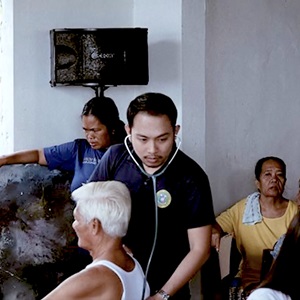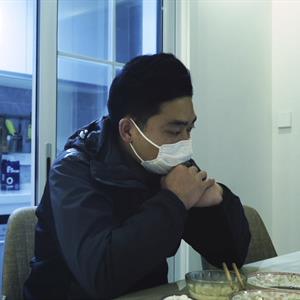The coronavirus disease 2019 (COVID-19) pandemic has brought huge challenges and risks to health workers in the Western Pacific Region and globally. Not only are they at higher risk of exposure to the virus (SARS-CoV2) that causes COVID-19, they also face a high workload, stress, profound psychological distress from the moral dilemmas they face and other threats.
Health workers play a vital role in keeping others safe, relieving suffering and saving lives. No country, hospital or clinic can keep patients safe unless its health workers are safe. Infections among health workers can lead to a depleted workforce at a time when they are most needed. The pandemic has highlighted the extent to which protecting health workers is key to ensuring a functioning health system and a functioning society.
Since the start of the pandemic, the World Health Organization (WHO) has been helping to protect health workers, including by publishing a range of guidance documents and tools. The Organization, in partnership with ministries of health and others, also has been procuring and delivering essential equipment, supplies and personal protective equipment (PPE).
PPE for health-care workers
 When Dr Joey Hernandez, a health worker in the Philippines, contracted COVID-19, he was keen to avoid infecting others: “If you get infected, it’s not your fault in any way. You need to act fast. Otherwise, more people may get infected, your symptoms may get worse and you can be hospitalized.”
When Dr Joey Hernandez, a health worker in the Philippines, contracted COVID-19, he was keen to avoid infecting others: “If you get infected, it’s not your fault in any way. You need to act fast. Otherwise, more people may get infected, your symptoms may get worse and you can be hospitalized.”
“To my fellow health workers, I would like to really thank you for choosing every day to serve, knowing fully that you can contract this disease,” says Dr Hernandez. Watch his story.
A key element in reducing the risk for health workers, their patients and those around them is PPE and the training and confidence to use it. As of early December, WHO had delivered PPE to 21 countries and areas in the Western Pacific Region. This includes more than 7.7 million surgical masks, 1.6 million particulate respirators, 3.4 million pairs of gloves, 824 000 face shields, 546 000 medical gowns, 400 000 pairs of goggles and 20 500 bottles of alcohol-based hand rub.
WHO in the Western Pacific has also published a range of advice on infection prevention and control (IPC) during the pandemic, tailored to the Region’s unique context. They include how to manage a critical shortage or lack of PPE, how to safely put on and remove PPE and a preparedness checklist for long-term care facilities to ensure good IPC protects both staff and patients.
Caring for the carers – health workers as a vulnerable group
 One of the many health-care heroes who contracted COVID-19 was Ting Li, an emergency room nurse working on the front lines in Wuhan, China. When her symptoms worsened, she was admitted to hospital, where she stayed for more than 50 days before being discharged.
One of the many health-care heroes who contracted COVID-19 was Ting Li, an emergency room nurse working on the front lines in Wuhan, China. When her symptoms worsened, she was admitted to hospital, where she stayed for more than 50 days before being discharged.
“This journey has left a deep imprint on our lives,” says her husband, Haitang. “I hope when my son grows up, he can remember what happened this year, remember what his mother went through and remember those who devoted themselves to the COVID-19 response.”
While Ting Li and other health workers represent less than 3% of the population in most countries, around 14% of COVID-19 cases reported to WHO are among health workers. In some countries, the proportion can be as high as 35%. Thousands of health workers infected with COVID-19 have lost their lives worldwide.
Recognizing that health workers are vulnerable to COVID-19, WHO in the Western Pacific Region published an interim decision-making tool to help manage the risks health workers face during COVID-19. Interim guidance on the prevention, identification and management of health worker infection supports decision-makers to avoid transmission of COVID-19 among health workers.
Physical and mental health
 The pandemic has placed extraordinary levels of psychological stress on health workers in high-demand settings for long hours, while separated from family and facing social stigma.
The pandemic has placed extraordinary levels of psychological stress on health workers in high-demand settings for long hours, while separated from family and facing social stigma.
Even before COVID-19 hit, medical professionals were already under strain. A review of health workers in China and Singapore found that one in four reported depression and anxiety, and one in three suffered from insomnia during COVID-19. WHO also recently highlighted an alarming rise in reports of health workers being targets of verbal harassment, discrimination and physical violence during the pandemic.
One nurse’s distress has stayed with Wang Yi, a counsellor who volunteered as a mental health aid worker when COVID-19 struck Wuhan in China: “[The nurse] was under a lot of stress and burst into tears on the phone. She had to wear all that heavy protective clothing and spend hours on the wards without eating or drinking, facing the life and death of her patients, as well as the risk of getting infected herself.”
“We counsellors bring a little light into people’s lives. We hope this light can become a beacon of hope that will bring warmth to those who have lived through this pandemic,” says Wang Yi.
WHO has provided guidance and advice to promote mental health for health workers and managers of health facilities, among others. WHO in the Western Pacific Region has produced a series of messages that can be used to support the mental and psychosocial well-being of health workers, their team leaders or managers, and other high-priority audiences.
Many of the actions WHO recommends to protect health workers from COVID-19 are aligned with improving health systems in general. On 17 September 2020, World Patient Safety Day, WHO released its Health Worker Safety Charter, which calls on governments and those running local health services: to protect health workers from violence, to improve their mental health, to protect them from physical and biological hazards, to advance national programmes for health worker safety, and to connect health worker safety policies to existing patient safety policies.




